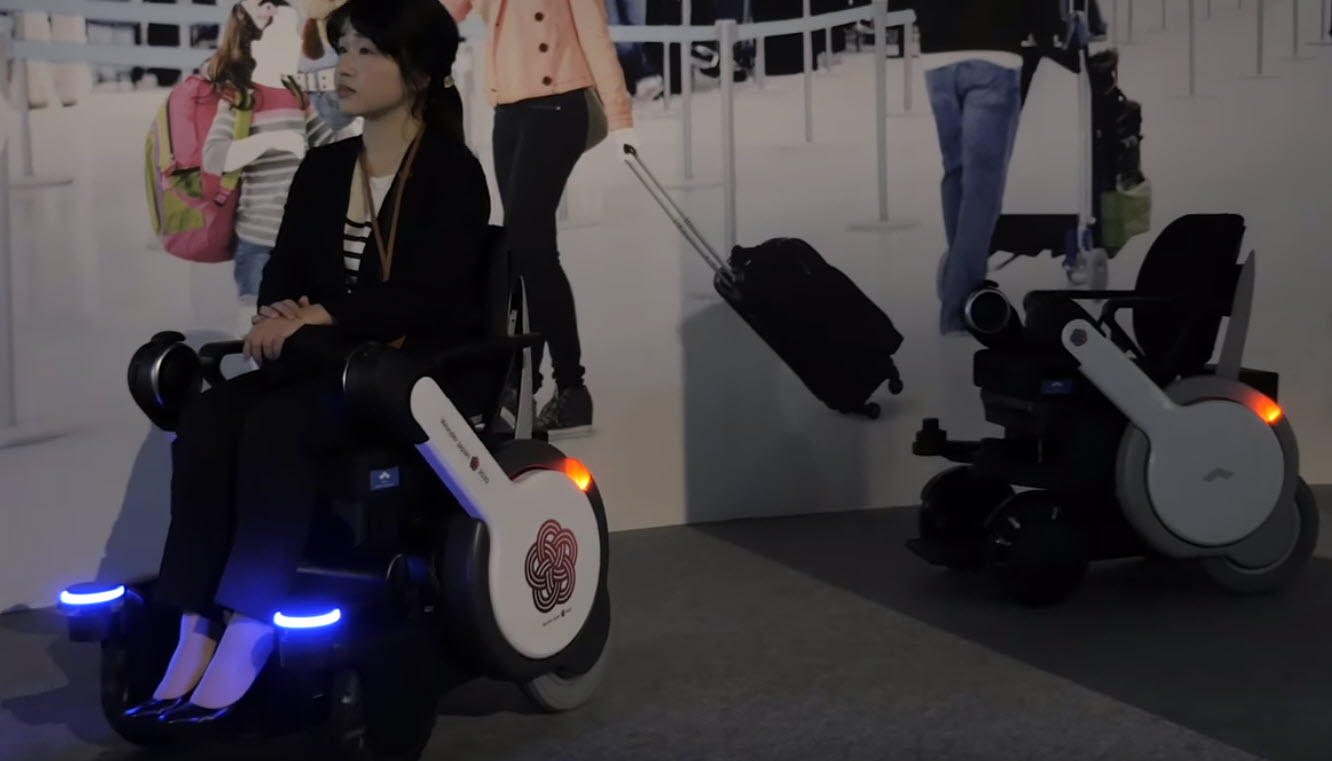
The Panasonic WHILLNEXT autonomous robotic wheelchair will be deployed at Tokyo Haneda Airport by 2020. Photo: Panasonic
Written for the APEX Experience magazine – Issue 8.1 – February/March 2018
Self-driving. Autonomous. AI-powered. Driver-assistance enabled. No matter what you call it, or how you feel about it, you’re on the road to having an electronic co-pilot – or perhaps an autopilot – help you drive your car.
It seems that every car company is embracing new technologies that are giving cars the “smarts” to anticipate and react to everyday driving situations. Lane-keeping, collision-avoidance braking and smart cruise control are just some of the features appearing in cars from the most mainstream Toyota to high-tech Tesla.
Airports in Atlanta, Seattle and Singapore have operated computer-controlled shuttle trains for years, linking terminals to reduce travelers’ walk-times. And now, autonomous mini-buses are being deployed in airports such as Helsinki and Adelaide, Australia, for a fraction of the cost of building dedicated tram links.
These technologies have even filtered down to something as ubiquitous as a check-in kiosk that, thanks to SITA Labs, can now move autonomously to congested areas of the airport and print boarding passes and luggage tags.
Panasonic, for its part, has teamed up with WHILL to create the WHILLNEXT autonomous robotic wheelchair which travelers with reduced mobility can summon through a smartphone app. Once dispatched, the unit navigates a busy terminal using built-in sensors and mapping software.
Trials of the WHILLNEXT are underway at Tokyo’s Haneda Airport, with plans to deploy the robotic wheelchairs throughout Japan’s airports in time for the 2020 Olympics.
Airliners have had autopilots for decades, and military drones have been flying for years – both supervised by pilots in the cockpit and on the ground. But could recent pushes towards “true” artificial intelligence (AI) by Airbus and Boeing have us flying in pilotless airplanes in the near future?
“Right now, the public, the airlines, and the airlines’ insurance underwriters are not ready to think about this,” says Henry Hardevelt , travel industry analyst, Atmosphere Research Group.
Even once they are, humans won’t be removed from the equation. “I don’t think that when we talk about autonomous aircraft, it will literally mean no one is minding the store,” Hardevelt says. “I believe there will always be some cadre of people involved, who will be overseeing an airline’s flight operation. There will simply be far fewer people who are considered ‘pilots.’”
So, expect to see your pilots’ smiling faces for a while yet, Hardevelt says. “It’s going to be a crawl-walk-run process, and that crawl phase is going to be very long, very slow, and very deliberate.”
In the meantime, passengers will have to content themselves with the nearer-term possibility of another type of self-driving vehicle in the cabin: engineering solutions firm Altran has developed a robotic trolley concept that can navigate independently through an aircraft’s aisles, serving food and beverages and even collection garbage at the end of a flight.